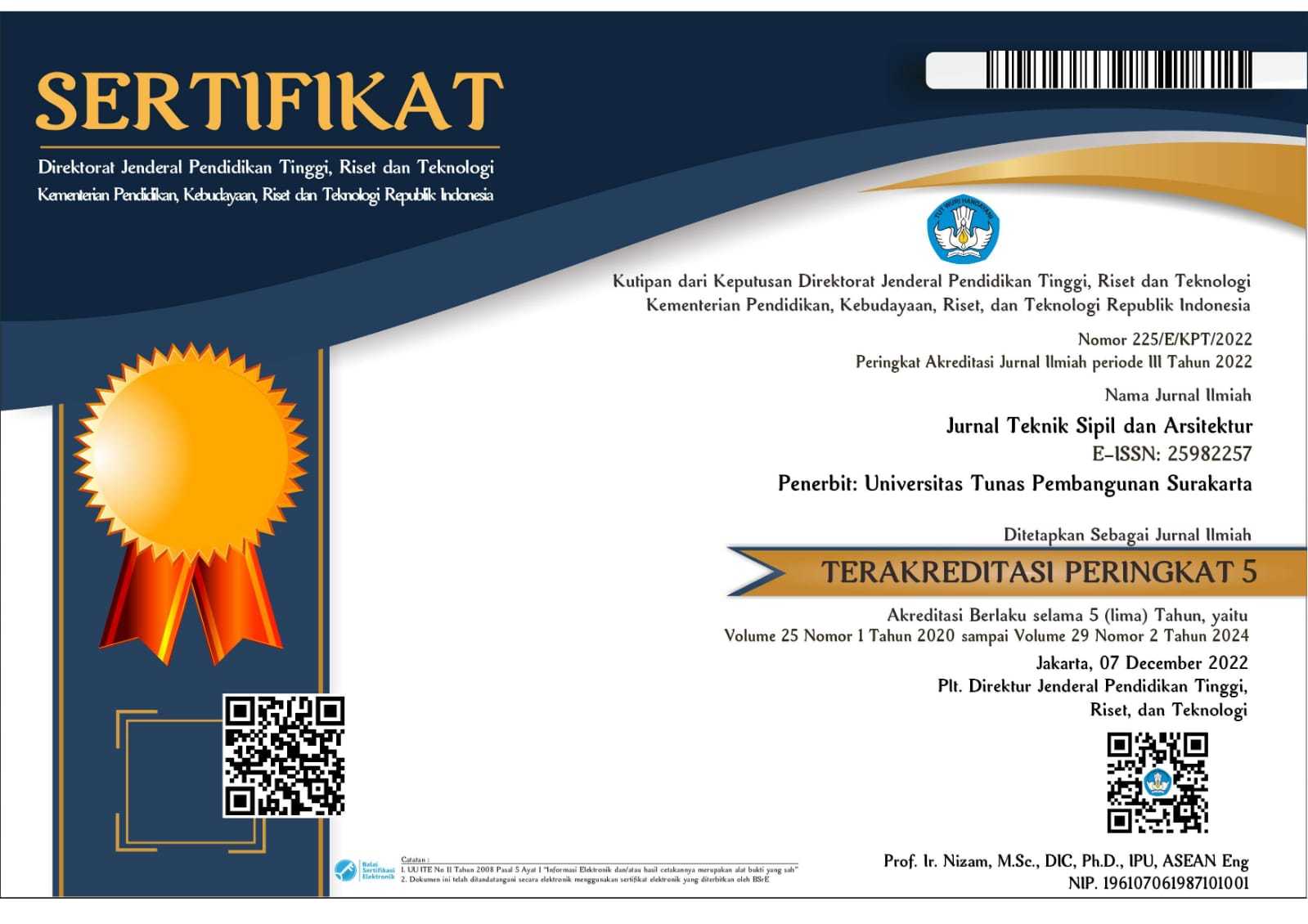KARAKTERISTIK MORTAR GEOPOLIMER BERBASIS FLY ASH KELAS C DENGAN PENAMBAHAN BORAKS
Abstrak
Cement has been widely utilized as a primary material in the construction of structural and architectural elements. The cement factory industry can contribute to 30% of global carbon dioxide emissions. Geopolymers were first introduced by Davidovits in 1979 to represent inorganic polymers produced from geochemistry. Geopolymer materials make use of waste materials such as fly ash as a substitute for concrete binders. In this study, Class C (high calcium) fly ash from the Paiton Power Plant was used. The mix design for geopolymer mortar in this study employed the absolute volume calculation method. Absolute volume calculations are based on the absolute volume proportions of each constituent material within 1 m3. The compressive strength of geopolymer mortar with the addition of 5% borax to the molarity value, the alkali/cementitious ratio showed good performance in the mechanical properties of geopolymer mortar. Alkali/cementitious ratios of 0.3, 0.35, and 0.4 in Class C-based geopolymer mortar with 5% borax addition exhibited good workability, making it suitable for use as a base material in architectural material production.

















